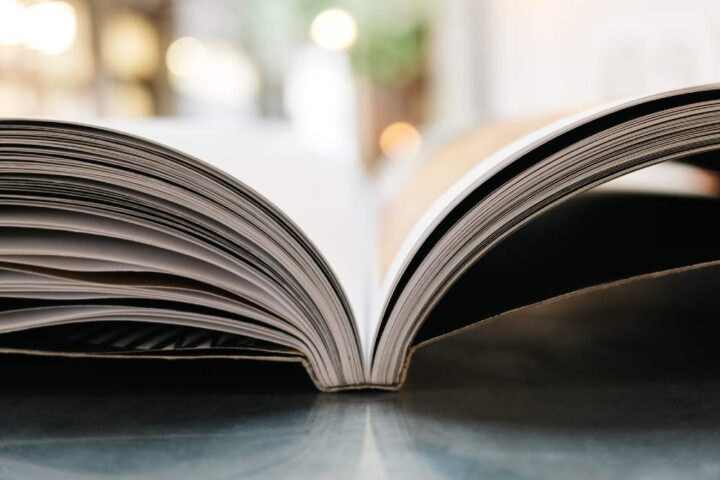The Essential Guide to High-Quality Book Printing
You’ve finished writing your masterpiece and are ready to hold your published book in your hands. But transforming your manuscript into a tangible book that realizes the visions in your imagination is no simple process. Printing physical books requires navigating complex technical considerations around layout, materials, binding, finishings, and production workflows.
Thankfully, modern digital printing technologies and knowledgeable printing partners now make professional book printing more accessible than ever. This guide takes you through the key process steps, decisions and industry terms every author should understand when printing physical books of any format from paperback to multi-colour visual showcases.

Key Phases of Professional Book Printing
High-end book printing tailored exactly to creative visions involves several production phases spanning initial manuscript files to shrink-wrapped pallets of finished print inventory.
Pre-Press and Workflows
The pre-press stage converts original book files into printing-ready material encoded for the planned equipment and process specifics. Common pre-press steps include colour correction, image sharpening, font handling and other optimizations to maximize output quality. Digital workflows automate complex pre-press via prebuilt templates and settings for different print configurations.
Colour Management
Controlling colour accuracy as artwork transfers between digital-to-print mediums ensures fidelity in realizing creative intent. Careful color management tweaks RGB and CMYK mixes compensating for the way printing presses apply inks to paper differently than on-screen graphics. Good colour management prevents unexpected hue shifts from ruining layouts.
Proofing
Proofing allows previewing of physical print quality before committing to full production runs. Early proofing confirmation reduces wasted time and materials from fixes catching issues only after printing finished books incorrectly. Digitally printed proof copies identically represent final print quality for reliable approvals.
Printing
Whether utilizing lithographic offset or direct digital printing methods, book printers transfer finalized electronic files onto paper pages producing printed sheets compilation into book format requires next. Presses may print black and white or full colour; print multiple pages across oversized sheets for post-print cutting depending on the desired layout and binding.
Binding and Finishing
Binding joins printed sheets together into final book form and durability is expected whether in paperback, hardcover or spiral formats. Finishing steps provide final aesthetic touches like laminates or foil applications elevating a premium feel.
Key Book Printing Decisions
Navigating the production process requires many input decisions balancing creative aspirations, cost and production practicalities.
Digital vs. Offset Printing
Weighing digital versus offset methods depends on book specifics like page count, print runs needed, any special effects or timeline urgency. Digital printing better serves lower volume and customizable print runs faster, while offset lithography handles mass book runs more economically long-term at higher upfront setup costs. Consult knowledgeable printers to determine the ideal production method for your project.
Colour Model
Full-color printing costs more than black and white but photographs, illustrations and complex designs demand vibrant reproduction. Evaluate colour necessity across book sections, as many textbooks apply colour just highlighting key terms saving cost. While black and white prove the cheapest, spot colour adding limited accent colours offers a compromise between branding vibrancy and affordability.
Paper Stock
Book paper impacts aesthetic experience and durability profoundly. Coated stocks offer smoother surfaces with crisper ink holdout but cost more. Uncoated papers exude vintage heritage charm but get absorbed faster losing vibrancy quicker over decades. Synthetic sheets increase durability. Paperweights and textures set tone-balancing needs.
Binding
Hardback book printing provides a classic polished presentation for books prioritizing collectibility, like cultural works. Spiral bound books suit frequent referencing remaining open flat. Stapled and glue-bound paperback options serve budget sensitivity without compromise still providing clean results and accessibility bringing ideas to the masses.
Size Format
A standard book size follow familiar dimensions readers comfortably hold and shelve. But custom formats and special shapes prove useful, especially for visual-focused books, children’s literature or displays seeking differentiation. Any custom dimensions get factored into pricing.
Special Finishings
Premium touches elevating heirloom-quality books come through speciality finishing applications enhancing visual intrigue or permanency. Tactile spot UV or foil stamping adds striking metallic accents. Laminate or varnish coats protect against scuffs and wear while interior images sustain vibrancy across decades. Embossed covers and debossing indent shapes into pages further capture light uniquely.
Navigating Print Quantities Needed
With key specifications decided during pre-production, determining optimal print run quantities completes planning. Quantities balance ensuring enough stock for sales demand without overprinting and wasting money on unused surplus copies. Typical factors influencing ideal print runs include:
Anticipated Sales Volume
Consider realistic projections given author platform reach, book genre competition, publicity plans and retailer distribution estimating necessary supply levels.
Inventory Storage Ability
As printed books get heavier and take up space, scale quantities matching existing warehouse capacity until turnover frees space for replenishment reprints minimizing offsite rental fees and managing overflow stock.
Budget
Larger single print runs become more cost-effective per unit. But bind capital in unused inventory unable to sell through quickly enough. Moderate runs with reprint options later keep costs reasonable while retaining flexibility meeting unpredictable consumer response at launch.
Finding the Right Book Printing Partner
Executing flawless custom book printing and partnering with specialists intimately familiar with the nuances across printing methods, paper engineering and binding possibilities proves essential to realizing finished products matching the creative standards envisioned. As you search for ideal printing press partners, ensure:
Design Experience
Reputable printers show a design-forward thinking understanding of book cover layout aesthetics, font pairing principles, image manipulation for optimized printing fidelity, and advice around finishings that elevate perceived quality beyond commonly available commercial options. Providers like Dazzle Printing book printing often support this part of the process, offering guidance that helps align your creative vision with print-ready execution.
Specialization Expertise
Whether seeking premium high-volume offset runs or fast digital printing flexibility, identify providers specializing specifically in book printing building delivery systems around format-specific demands like dust jacket cutting, case binding and grouped ordering systems simplifying reprints later.
Consultative Creative Guidance
The best press partners collaborate actively with clients making recommendations tailored toward balancing budget, timelines and creative intent helping authors navigate the numerous decision points optimally. They realize books represent deeper personal investments than generic print collateral and guide you through the intricacies respectfully.
Conclusion
Ambitious authors aspiring to share ideas through professionally printed books appreciate the complexities undertaken to ensure flawless execution. Mastering essential vocabulary around binding variables and paper qualifiers gains confidence in collaborating with specialty press shops realizing ambitious tomes making meaningful splash.
Whether self-publishing an exclusive run of hundred units or contracting large-scale offset runs in the thousands, creative printing partnerships valuing books as conduits of imagination produce a profound difference distinguishing forgettable manuscripts from literary legacies enduring across lifetimes.


